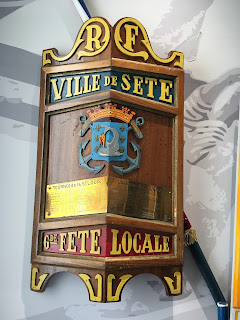I put off visiting Carcassonne for as long as possible. My impression of the town was of one, big Medieval-themed Disneyland with castle for a Carcassonne train station tourist trap. I was wrong. The day I went, it was overcast, windy and drizzling. If I had stayed in Montpellier, rowing would be out of the question, and I’d exhausted all other day trip destinations within my budget. The SNCF online app offered first class TGV tickets for the same price as second class, so I sprang for the upgrade. When you arrive at Carcassonne train station, you exit and Canal du Midi immediately cross over the Canal du Midi, which amazingly connects the Atlantic Ocean to the Mediterranean Sea. The canal is navigable by boat through a series of locks. Many people tour the canal by bicycle, or they do a combination of boat and bicycle. The wind picked up, and clouds played tag with clear sky. It was about a mile and a half walk from the train station to La Cité, the Carca...

















Comments
Post a Comment